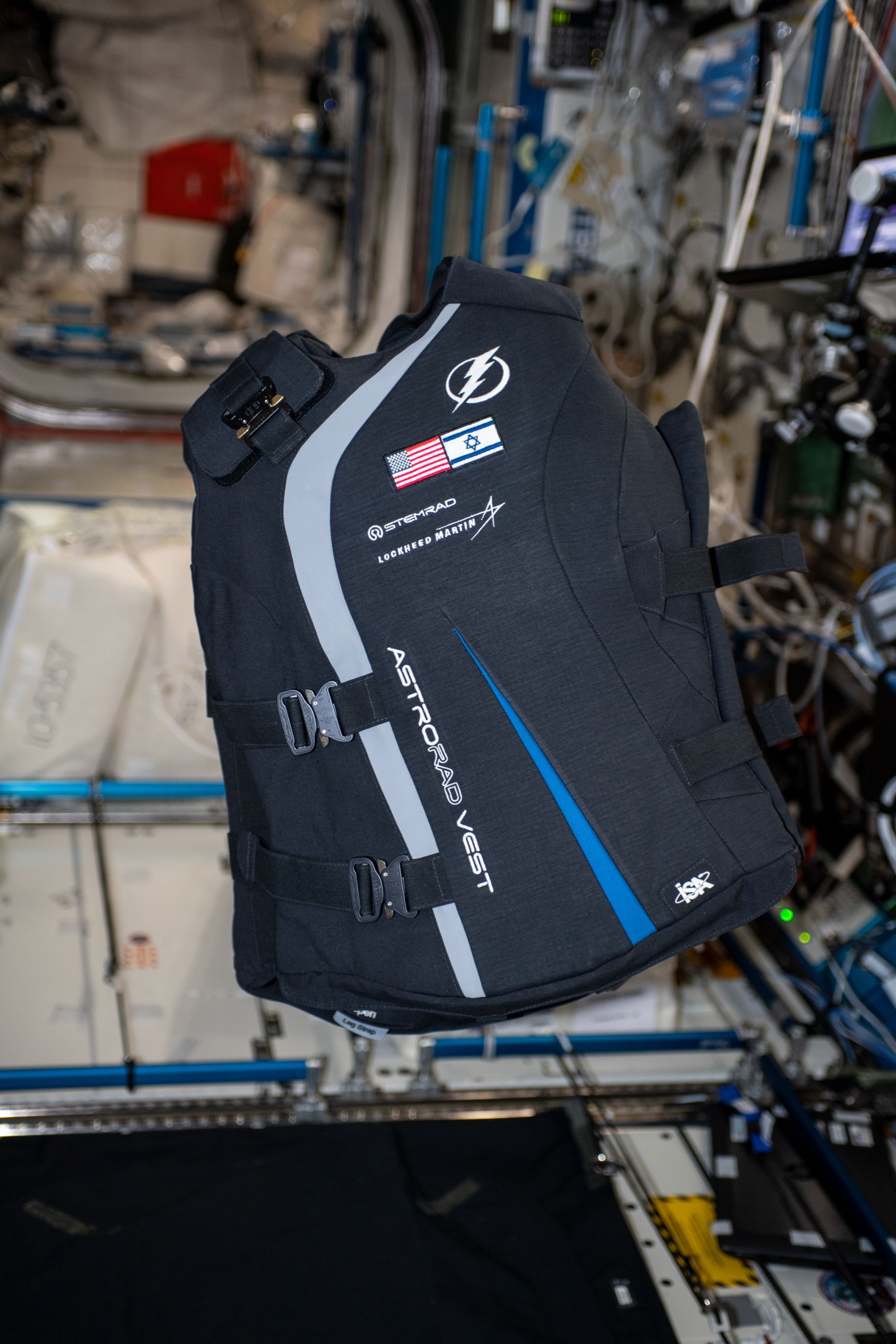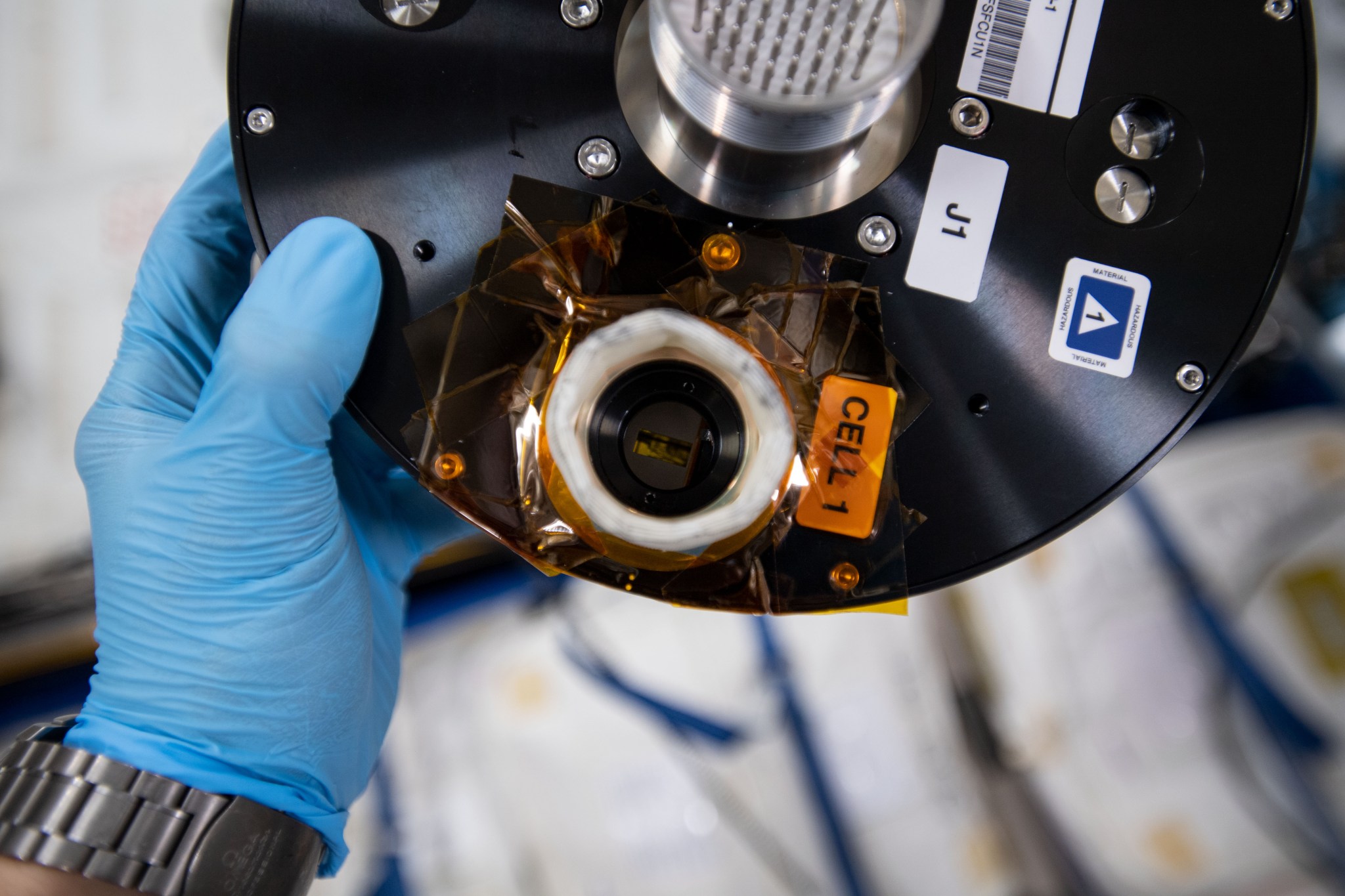Crew members aboard the International Space Station conducted scientific investigations during the week of Aug 29 that included examining changes in muscle properties in space, testing a radiation protection garment, and studying the mechanisms behind bone loss.
Here are details on some of the microgravity investigations currently taking place aboard the orbiting lab:
Managing Muscles
Previous studies suggest that muscle tone and stiffness decrease during spaceflight and that inflight exercise seems to mitigate these muscle changes. The ESA (European Space Agency) Myotones investigation observes changes in muscle properties during long-term spaceflight. Results could provide researchers with insight into human resting muscle tone and support development of better countermeasures for future space missions as well as alternative rehabilitation treatments for those experiencing the effects of aging and restricted mobility on Earth. Crew members took measurements of experiment target areas during the week.
Portable protection
AstroRad Vest, sponsored by the ISS U.S. National Lab, tests a vest designed to protect astronauts from radiation caused by unpredictable solar particle events. Astronauts perform daily tasks while wearing the vest, providing input on its fit, feel, and the range of motion it allows, contributing to improving the vest design. Results could help protect crew members from possible harmful effects of radiation on future missions to the Moon and Mars and improve radiation protection garments used on Earth. During the week, crew members wore the vest, documented range of motion tests, and completed a survey on the device.

No bone (loss) about it
Phospho-aging, an investigation from the Japan Aerospace Exploration Agency (JAXA), examines molecular mechanisms behind aging-like symptoms that occur more rapidly in microgravity, such as bone loss and muscle atrophy. Previous research identified calciprotein particles (CPPs) as a factor in aging in mammals. CPPs induce chronic inflammation and systemic tissue damage and could be a mechanism behind accelerated aging in space. Results may indicate whether countermeasures that target CPPs would help protect astronauts on future missions. The investigation also may provide evidence that bone loss from osteoporosis and osteopenia are causes of aging and not merely symptoms of it, and that interventions to prevent such loss could contribute to longer, healthier lives on Earth. The crew gathered blood and urine samples for the investigation during the week.
Other investigations involving the crew:
- Advanced Nano Step, a JAXA investigation, monitors and records how specific impurities affect the development and quality of protein crystals grown in microgravity. This investigation aims to improve the rate of crystal growth and help scientists understand impurities that deteriorate quality, which could contribute to research in space and on Earth.
- Airborne Particulate Monitor (APM) demonstrates an instrument for measuring and quantifying the concentration of small and large particles in spacecraft air. The data could shed light on the sources of particles and help protect air quality in spacecraft to keep astronauts healthy and comfortable on future missions.
- ISS Ham Radio sessions engage students, teachers, parents, and other members of the community in direct communication with astronauts via ground-based amateur radio units. This experience helps inspire interest in science, technology, engineering, and math.
- ESA’s NutrISS assesses body composition and energy balance using wearable sensors. Results could lead to improved physical health and quality of life for astronauts and better clinical management of malnourished, obese, or immobilized patients on Earth.
- Wireless Compose-2, an investigation from ESA, demonstrates an infrastructure for wireless transmission of data and a smart shirt for measuring forces generated by the heart as it moves blood. This technology could help monitor the health of astronauts on future missions and this investigation also could improve use of the technology on the ground.
- For Crew Earth Observations (CEO), crew members photograph Earth, recording how the planet changes over time due to human activity and natural events. Scientists have used these images in multiple ways and the investigation also makes it possible to monitor disasters and direct response on the ground.

The space station, a robust microgravity laboratory with a multitude of specialized research facilities and tools, has supported many scientific breakthroughs from investigations spanning every major scientific discipline. The ISS Benefits for Humanity 2022 publication details the expanding universe of results realized from more than 20 years of experiments conducted on the station. Access the publication and related materials online.
For daily updates, follow @ISS_Research, Space Station Research and Technology News, or our Facebook. Follow ISS National Lab for information on its sponsored investigations. For opportunities to see the space station pass over your town, check out Spot the Station.
John Love, ISS Research Planning Integration Scientist
Expedition 67


























